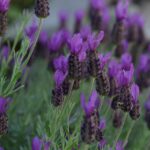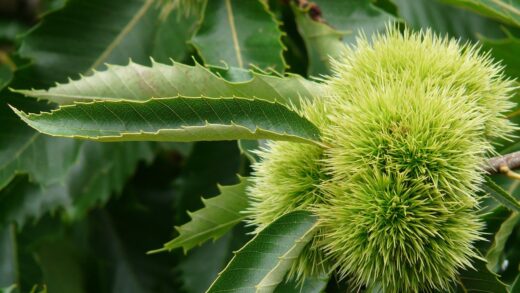The successful establishment and multiplication of orpine in the garden landscape hinge on understanding its fundamental needs, which are deeply rooted in its succulent nature. This plant is renowned for its resilience and ease of care, and these characteristics extend to its planting and propagation processes. Proper site preparation and timing are crucial first steps that lay the groundwork for a healthy, thriving plant that will provide seasonal interest for years. By following a few straightforward principles, gardeners can easily integrate this versatile perennial into their designs and expand their stock with minimal effort.
Planting orpine is a forgiving process, but attention to detail at this initial stage will pay dividends in the long run. The most critical factor is ensuring the chosen location offers excellent drainage, as the plant is highly intolerant of ‘wet feet’. This means preparing the soil to be friable and porous is non-negotiable for the plant’s survival and vigor. The ideal time for planting is typically in the spring, after the last frost has passed, which allows the plant the entire growing season to establish a robust root system before the onset of winter. Autumn planting is also viable, provided it is done early enough for the roots to take hold before the ground freezes.
When situating the plant, it is important to dig a hole that is approximately twice the width of the root ball but no deeper. The crown of the plant—the point where the stems meet the roots—should sit at or slightly above the level of the surrounding soil. Planting it too deeply can lead to crown rot, a fatal condition for succulents. After placing the plant in the hole, the soil should be backfilled gently, firming it around the roots to eliminate air pockets, and then watered thoroughly to help settle the soil and hydrate the plant.
Propagation is where orpine truly demonstrates its tenacity and eagerness to grow. It is remarkably easy to propagate through several methods, including division, stem cuttings, and even leaf cuttings. This ease of multiplication makes it a cost-effective choice for gardeners looking to fill large areas or share plants with others. Each method has its optimal timing and technique, but all are generally reliable and offer a high rate of success, even for the novice horticulturist. This versatility in propagation ensures that expanding a collection or replacing an aging plant is a simple and rewarding task.
Selecting the ideal planting location
Choosing the right spot for orpine is the single most important decision for its long-term health. The primary, non-negotiable requirement is full sun exposure. This means selecting a location that receives at least six to eight hours of direct, unfiltered sunlight each day. Without adequate sun, the plant will become leggy, its stems will be weak and unable to support the flower heads, and the foliage color will be lackluster. A south-facing or west-facing aspect is typically ideal for providing the necessary light intensity for compact growth and prolific flowering.
More articles on this topic
The second critical consideration is the soil’s drainage capacity. Orpine’s succulent leaves and stems store water, making the plant highly susceptible to root and crown rot in soggy conditions. Therefore, the chosen site must have soil that allows water to drain away freely. Sandy or gravelly soils are perfect. If the garden is dominated by heavy clay, it is essential to amend the planting area by incorporating generous amounts of organic compost and inorganic grit, such as coarse sand or fine gravel, to improve its structure and porosity. Alternatively, planting in raised beds or on a natural slope can provide the required drainage.
Consider the plant’s mature size and its need for good air circulation. Orpine forms substantial clumps over time, and planting it too close to other perennials or structures can impede airflow. Proper spacing not only gives the plant room to grow to its full potential but also helps to prevent the development of fungal diseases that can thrive in stagnant, humid air. Review the plant tag for the specific cultivar’s expected spread and plan accordingly, ensuring there is ample space between it and its neighbors.
Finally, while orpine is tough, think about its role in the overall garden design. Its bold, architectural form and late-season flowers make it a valuable structural plant. It pairs well with ornamental grasses, coneflowers, and asters, creating stunning autumn displays. Consider its placement in relation to these other plants to create a cohesive and visually appealing composition. Its drought tolerance also makes it a superb candidate for rock gardens, xeriscapes, and gravel gardens where its minimal water needs are a significant advantage.
The process of planting
The optimal times for planting orpine are in the spring or early autumn. Spring planting, after the danger of frost has passed, gives the plant the entire growing season to establish a strong root system. Autumn planting can also be successful if done at least four to six weeks before the ground freezes, allowing the roots sufficient time to anchor themselves. Avoid planting during the peak heat of summer, as this can cause unnecessary stress on the new transplant.
More articles on this topic
When you are ready to plant, prepare the planting hole. It should be dug to be about twice as wide as the container the plant came in, but no deeper. It is crucial that the depth of the hole allows the crown of the plant to sit level with or even slightly above the surrounding soil surface. This positioning is a key preventative measure against crown rot. Loosening the soil at the bottom and sides of the hole can also help the roots to penetrate the new environment more easily.
Carefully remove the orpine from its nursery pot, inspecting the root ball. If the roots are tightly coiled or pot-bound, gently tease them apart with your fingers to encourage them to grow outwards into the new soil. Place the plant in the center of the prepared hole, ensuring the top of the root ball is at the correct height. Once you are satisfied with the positioning, begin to backfill the hole with the excavated soil, firming it gently around the root ball to eliminate any large air pockets.
After the hole is backfilled, the final step is to water the newly planted orpine thoroughly. This initial deep watering is important for settling the soil around the roots and providing hydration as the plant begins to acclimate to its new home. For the first few weeks, monitor the soil moisture and water as needed to keep it lightly moist but never waterlogged. Once you see signs of new growth, you can gradually reduce the frequency of watering as the plant becomes established.
Propagation by division
Division is one of the most common and reliable methods for propagating orpine, and it also serves as a way to rejuvenate older, oversized clumps. The best time to divide the plant is in the early spring, just as the new growth buds are emerging from the crown. This timing allows the newly created divisions to have the entire growing season to recover and establish themselves. Division can also be performed in the autumn after flowering has finished, but spring is generally preferred for a higher success rate.
To begin the process, carefully excavate the entire clump using a sturdy spade or garden fork. Dig widely around the perimeter of the plant to minimize damage to the root system. Once the clump is lifted from the ground, you can shake or gently wash off some of the excess soil to get a clearer view of the crown and root structure. This will make it easier to identify the best places to make the divisions.
Using a sharp, clean knife, a spade, or even two garden forks placed back-to-back, separate the large clump into smaller sections. Each new division must have a healthy portion of the crown with several growth buds (eyes) and a substantial piece of the root system attached. Aim to create divisions that are at least the size of a fist for the best results, as these will establish more quickly than very small pieces. Discard any old, woody, or non-productive parts from the center of the original clump.
Once the divisions are made, they should be replanted immediately to prevent the roots from drying out. Plant them at the same depth they were previously growing, in a well-prepared site with good drainage and full sun. Water the new divisions thoroughly after planting to settle the soil. They may show some signs of transplant shock initially, but they typically recover quickly and will put on new growth within a few weeks, resulting in multiple new plants that are identical to the parent.
Propagation from cuttings
Propagating orpine from stem cuttings is an incredibly simple and effective technique that can be done throughout the growing season. The ideal time is from late spring to mid-summer, when the plant is in a state of active growth but before it has started to form flower buds. This method allows you to create a large number of new plants from a single parent specimen without the need to dig up the entire clump. It is a perfect way to increase your stock or share with fellow gardeners.
To take a stem cutting, select a healthy, non-flowering stem and, using a clean, sharp pair of pruning shears or a knife, cut a section that is about four to six inches long. Make the cut just below a leaf node, which is the point where a leaf attaches to the stem. Carefully remove the leaves from the lower half of the cutting, as this is the portion that will be inserted into the rooting medium, and leaving the leaves on could lead to them rotting.
The prepared cuttings can be rooted in either water or a rooting medium. For water rooting, simply place the stripped end of the cuttings in a jar of water, ensuring no leaves are submerged. For medium rooting, insert the lower half of the cuttings into a pot filled with a well-draining mix, such as a combination of perlite, vermiculite, and peat moss or a commercial seed-starting mix. The medium should be pre-moistened and kept lightly damp, but not wet, throughout the rooting process.
Place the cuttings in a warm location with bright, indirect light. Roots typically begin to form within two to four weeks. You can check for rooting by giving the cutting a very gentle tug; if you feel resistance, roots have formed. Once a healthy root system has developed, the new plants can be carefully transplanted into individual pots or directly into a prepared garden bed to continue growing. This method is so reliable that even stems that accidentally break off the parent plant can often be successfully rooted.


















